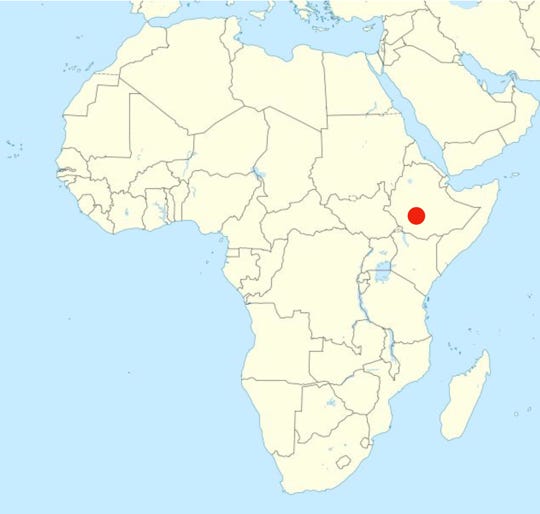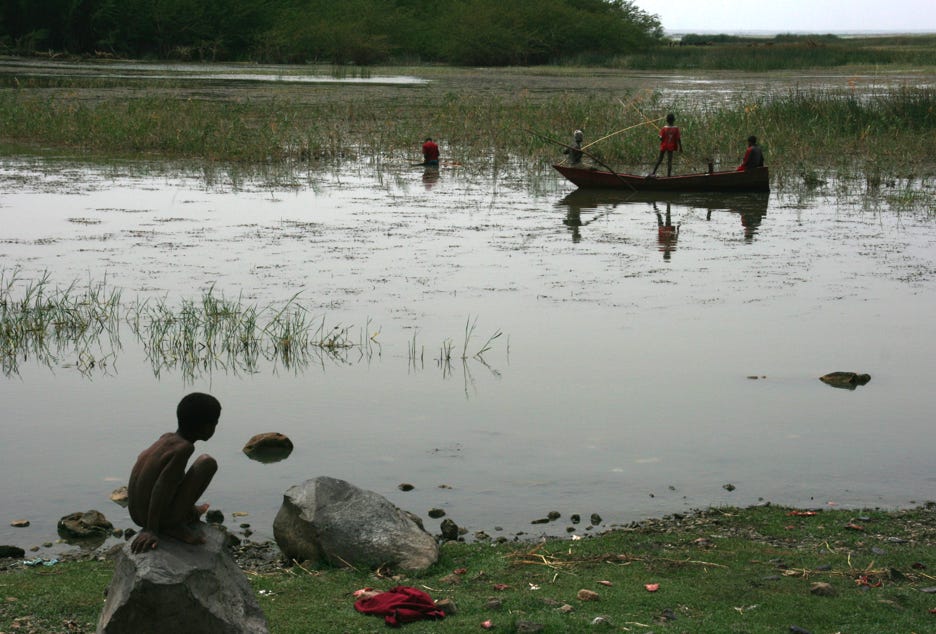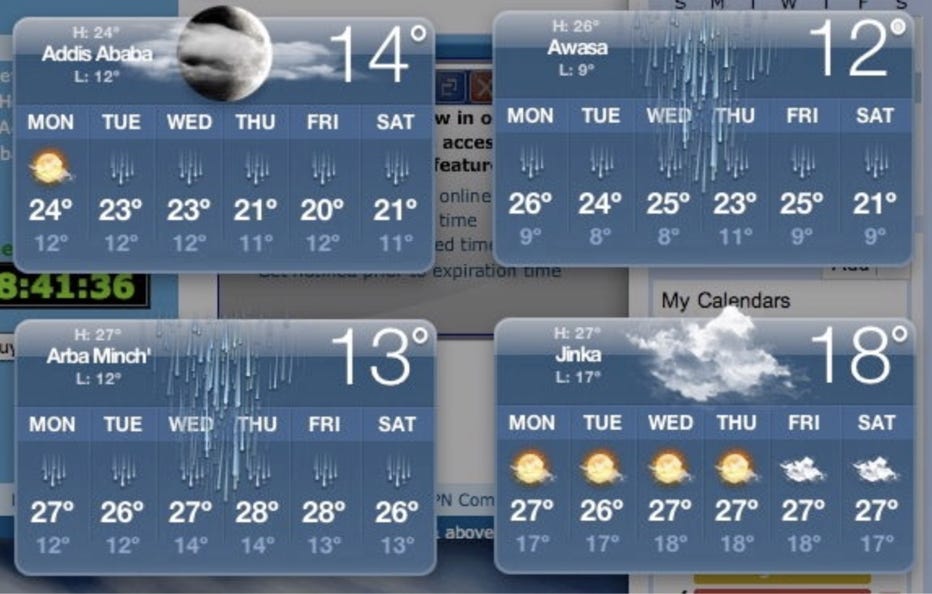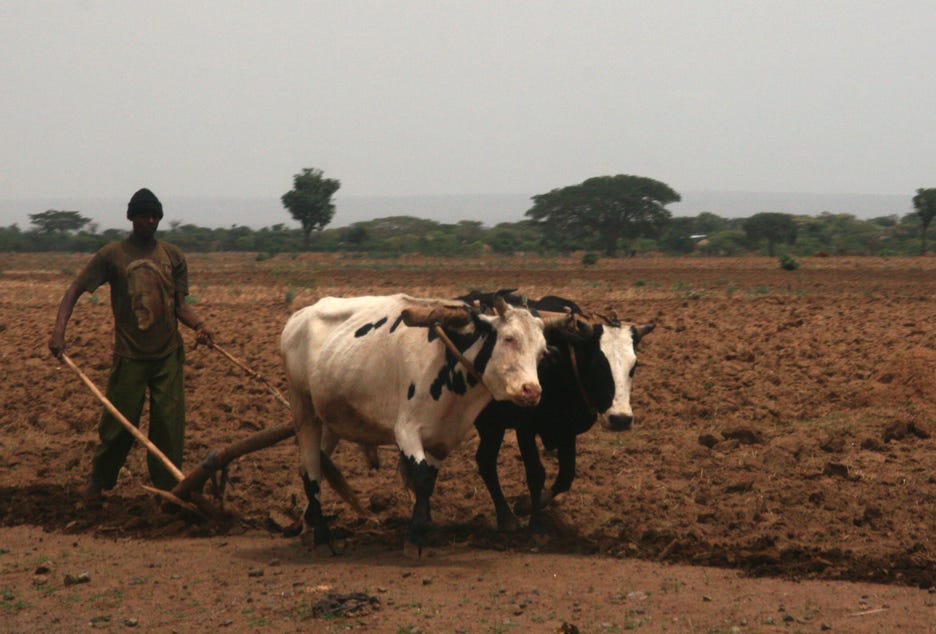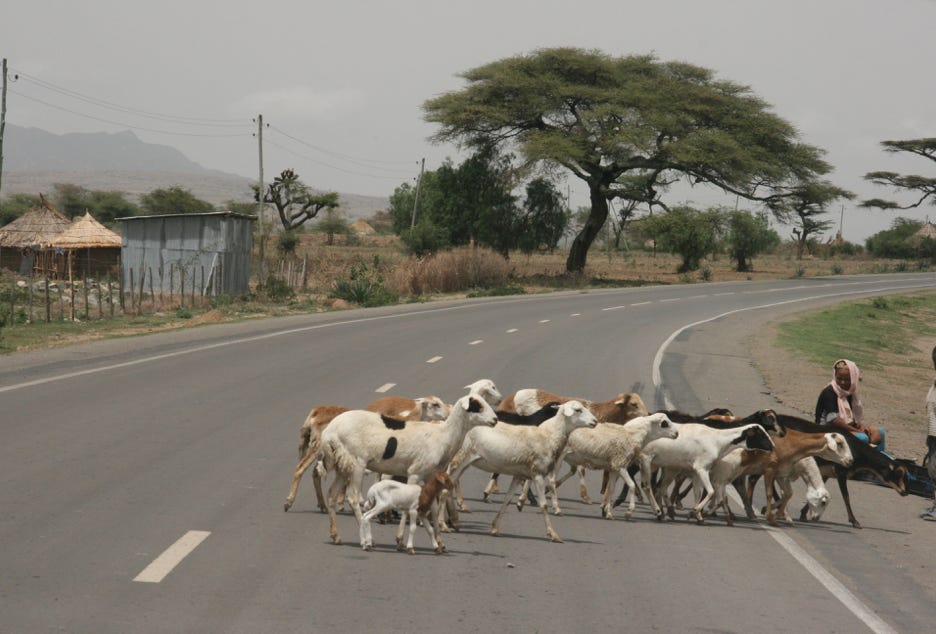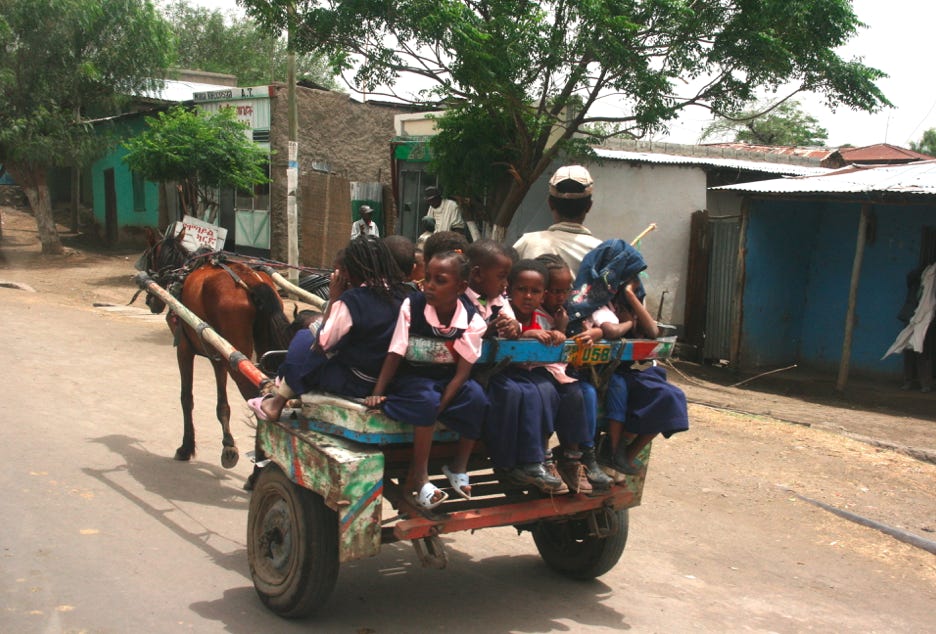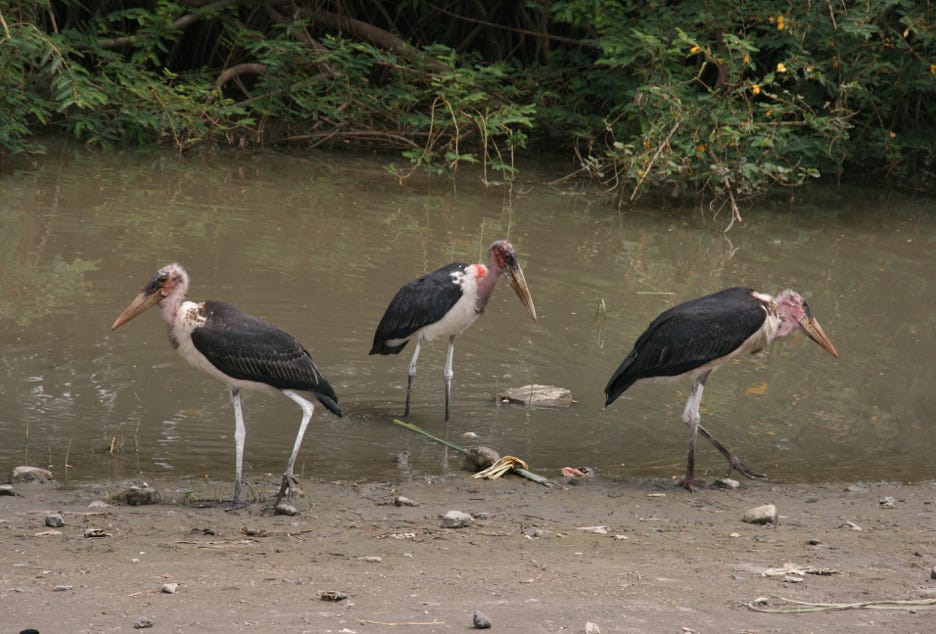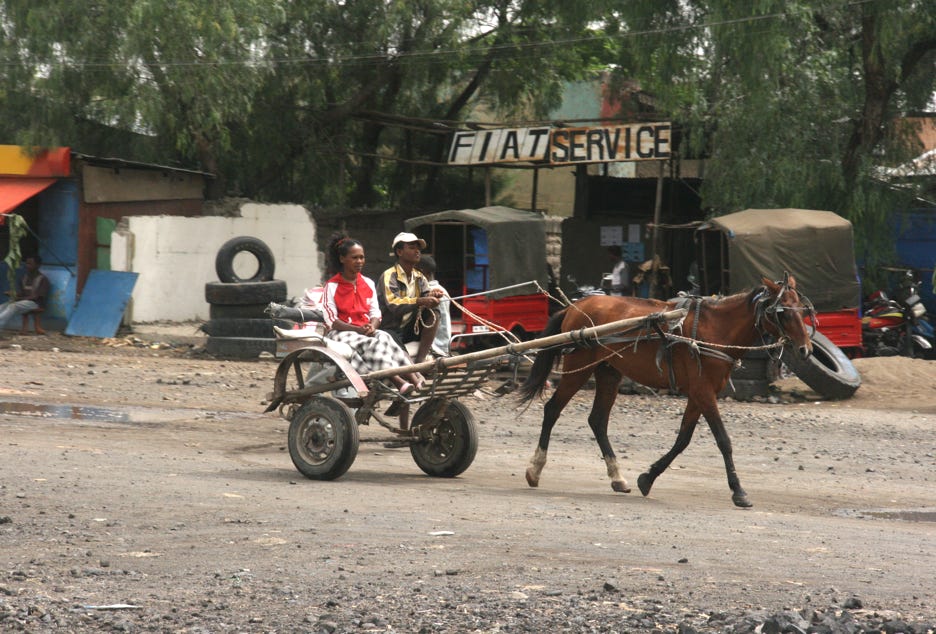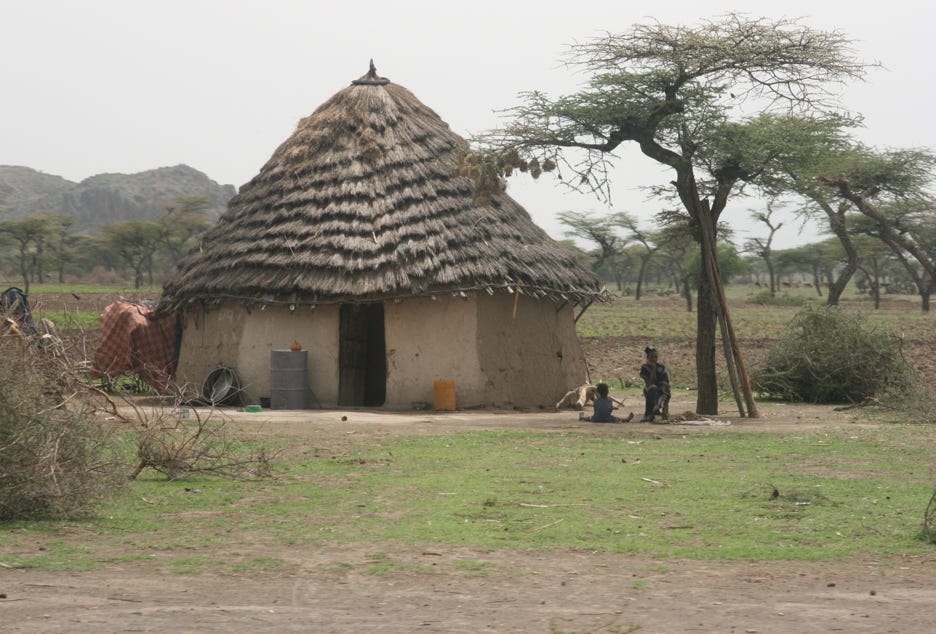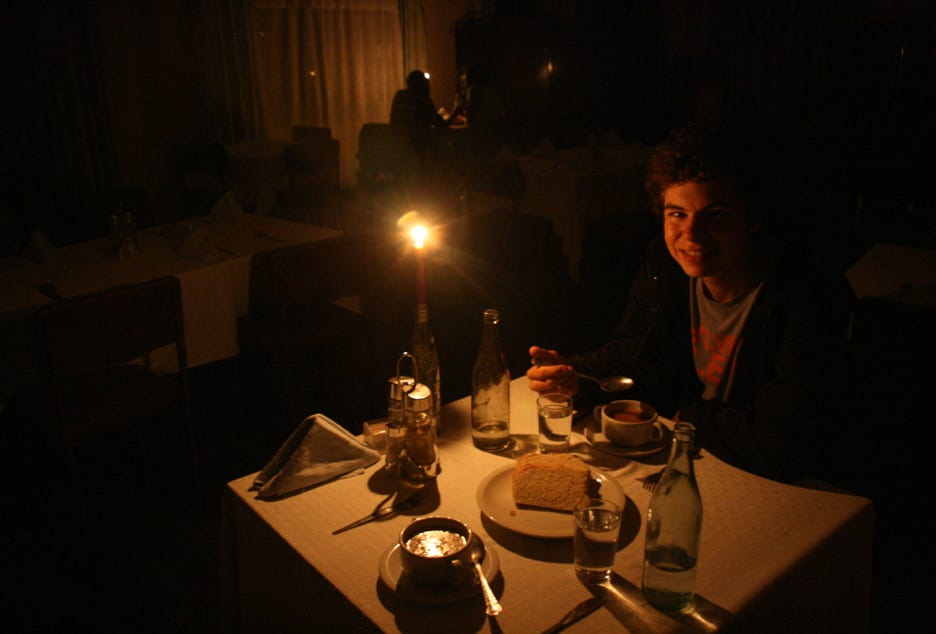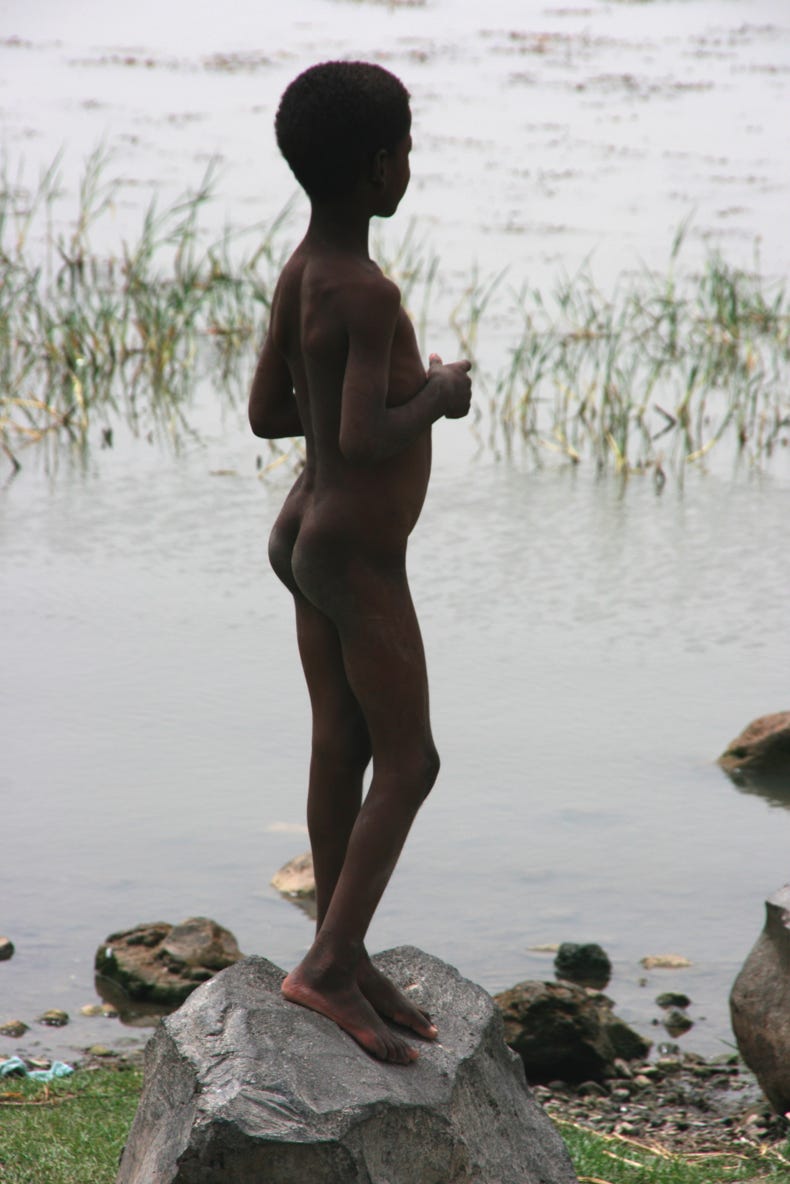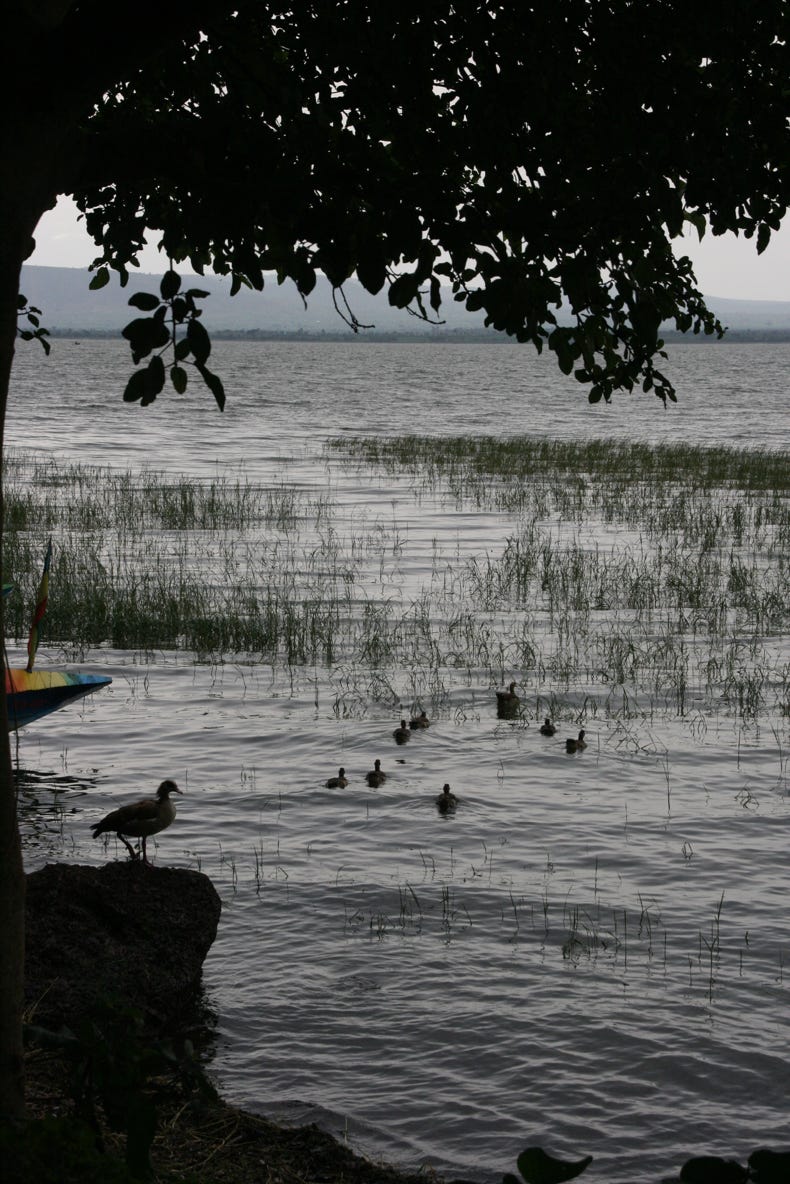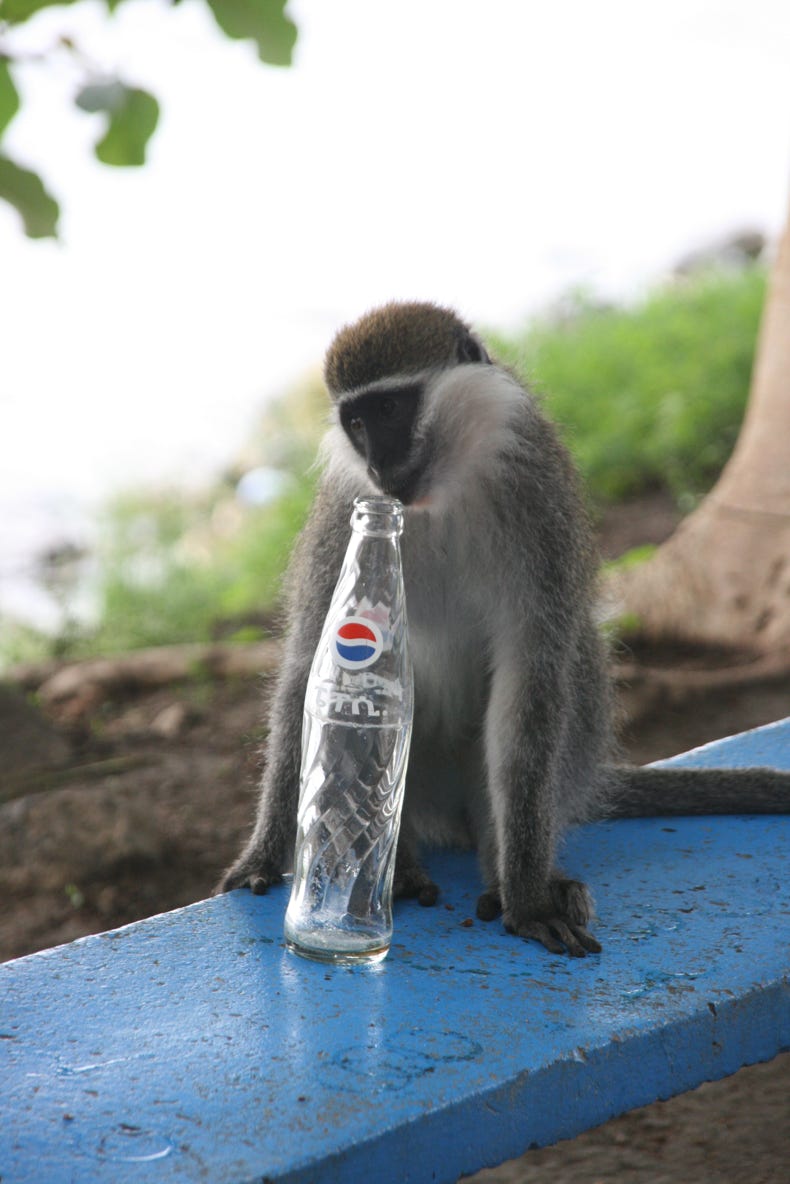

Ethiopia could not really be called a common destination for travellers – and it is even less common as a destination for tourists. (Note that I regard myself as a traveller rather than a tourist!). Almost all travellers who do manage to get to Ethiopia spend their time on the ‘northern circuit’ where Andrew and I spent most of last week. Only the very intrepid make the journey into southern Ethiopia. On the subject of travel into southern Ethiopia, the Lonely Planet guide comments “know that travel here is as tough as it is outstanding; we’ll make only one guarantee - it will be memorable”.
This morning we began our adventure into southern Ethiopia. Our destination for the day was Awasa, capital city of the province known as Southern Nations, situated 270 kilometres south of Addis Ababa. The weather forecast was certainly not auspicious. The wet season has begun in southern Ethiopia, and before I closed my internet connection in Addis Ababa I checked the weather widget for three of the places we intended to visit during the coming week (see the screen snap at right, which tells its own depressing story).
As it turned out, our weather today was considerably better than the prediction, with overcast conditions and evidence of recent rainfall, but almost no rain falling where we were at the time.
We enjoyed a last breakfast in Addis Ababa, and yet again there was a surprise in store for us. Today’s surprise was mine - maybe Andrew could have had another surprise with his cup of tea (like yesterday), but as he had still not received it by the time he had finished his breakfast (also like yesterday), he left without waiting for it. I asked for coffee with milk, and after a long wait it did arrive - in a way. The waitress dutifully filled my cup to the brim with hot milk, and then left the pot of coffee on the table for me to add incrementally as I sipped the coffee (or rather milk). I have never had coffee served like that before. It wasn’t bad after a while, but it was unusual.
Before leaving Addis Ababa, we needed to pay a visit to the Djibouti Embassy. We are planning to pass through Djibouti in a couple of weeks, and the Consulate in Hong Kong is not empowered to issue visas. The Djibouti Consulate in Hong Kong suggested (helpfully?) that the best way for us to get our visas would have been for me to travel to their embassy in Beijing, where it could be issued within 24 hours; it had to be done in person, although I could have obtained Andrew’s on his behalf as he was under 18. The problem was that I didn’t have a couple of weekdays spare to go to Beijing in the latter part of the term, nor did I particularly want to pay for a return air fare to Beijing just to obtain a visa for Djibouti.
The staff at the Djibouti Embassy this morning were very helpful. They accepted the forms, and even offered to process the visas using just one passport-sized photo rather than the required two. However, they also noted that no-one would be present in the Embassy today to process visas, and therefore they would be ready by tomorrow afternoon at the earliest. That was not very convenient given our plans to head off into remote areas of southern Ethiopia that morning, but fortunately my friend in Addis Ababa, Habtamu, agreed to go to the embassy tomorrow and collect the passports on our behalf. If all goes well, they should be waiting for us when we return to Addis Ababa a week from now.
The road south from Addis Ababa was very smooth, and made for a comfortable ride in the 4WD drive vehicle we had. The scenery on the trip was fascinating, with activity everywhere and things to see all the way, including animals ploughing in the fields, children tending cattle, women carrying fuelwood, large covered areas to cultivate flowers for export to Europe, a few (very large) herds of camels, all within a landscape that was stereotypically African, with flat-topped acacia trees providing welcome shade to groups of animals and people alike. One strange sight - a naked man wandering aimlessly on the road towards the oncoming traffic - led Andrew to question why the practice of grown men wearing shorts (rather than long trousers) is considered underdressed in Ethiopia.
There are some parts of the world where a certain sameness emerges in the scenery after a while, but today’s drive towards Awasa could not be viewed in that way. We continued without stopping for 160 kilometres, when we reached the town of Ziway. This town presented the opportunity for a welcome lunch stop, and we called in to a lovely, shady courtyard beside a roadside hotel to enjoy a meal of spaghetti bolognaise followed by a great macchiato. Our route south was following the Great Rift Valley, and Ziway was situated beside the largest of the northern Rift Valley lakes, appropriately named Lake Ziway.
After finishing lunch, we took a short diversion to the lake’s edge to observe the prolific bird life and lakeside activities. Lake Ziway was visually stunning, and Andrew and I had a great time taking some wonderful photographs (well, I think they are good!). The image at the top of this page was taken at Lake Ziway, and shows some young boys fishing. The photo at left shows some red-beaked pelicans at the same place.
We were a bit sorry to leave the beauty of Lake Ziway, but we had a further 120 kilometres to drive before we reached our destination, Awasa. Like the drive before lunch, the drive from Ziway to Awasa never had a dull moment - there was something interesting to see the whole way. We reached Awasa at about 3:30 pm, and checked into our accommodation, the Shebele Hotel. Accommodation at the hotel was bungalow style, and although the rooms were huge, the beds and chairs were seriously sagging and worn out - and had been for many years I suspect. An interesting feature of the hotel was that about a hundred monkeys and chimpanzees roamed freely through the grounds and the huge shady trees - the fact that some of them could be seen wandering around carrying sugar bowls from the dining hall and other odds and ends was a warning not to leave any personal property lying around.
On the positive side, however, the hotel was located right beside another large Rift Valley lake – Lake Awasa - and the banks of the lake constituted a bird nesting area. So almost as soon as we arrived, Andy and I took the short walk to the edge of the lake to do some serious bird watching - well, it would have been ‘serious’ if we had been able to identify any of the birds we were observing. There were various types of waterbirds as well as ducks (and ducklings) - you know, the sorts of things you would expect to find at the edge of a large lake in southern Ethiopia.
Dinner this evening was in the dining hall at the hotel (as the hotel’s isolated location made anything else impractical). The meal was excellent in both quality and value. Andy started with vegetable soup whereas I began with chicken soup. We then both had gilled tilapia (that was actually fried), followed by fresh pineapple and coffee. There always seems to be some noteworthy feature of each of our meals in Ethiopia. For this meal the distinctive feature was that we had almost all of it during a blackout. The lights all went out just as we arrived at the dining hall, but we were ushered in by the waiter (who reminded me of Lurch from the Addams Family in stature, manner and ‘cheerfulness’ - but maybe it was just the darkness). He lit a candle which he placed elegantly into a soft drink bottle (Mirinda, as I recall), and showed us to our table. And that was how we ate tonight’s dinner.
The southern part of Ethiopia is an endemic area for malaria, as we were reminded when we entered our room and saw the large mosquito nets over our beds. Mosquito nets may be hot to sleep under, but they are preferable to catching malaria, so we slept AND used insect repellant as well, just to be sure.
